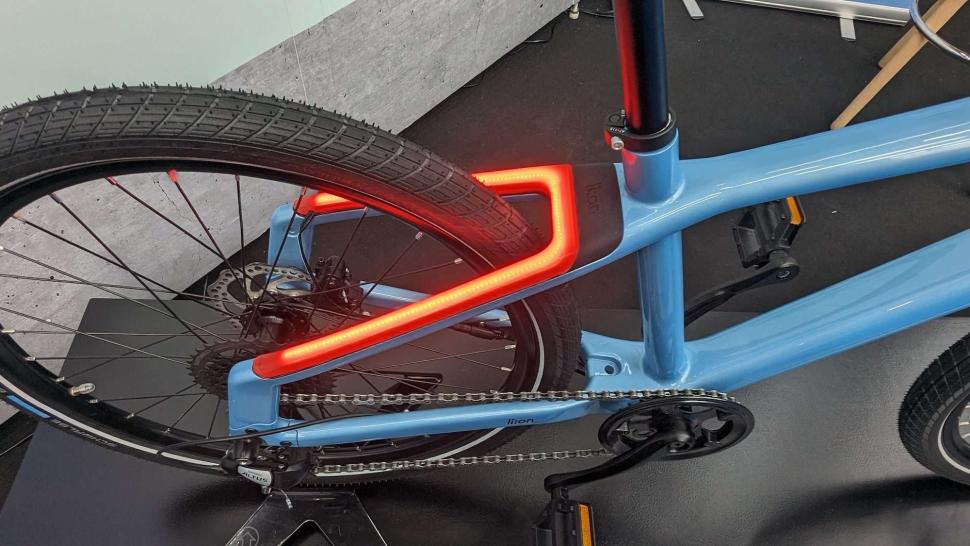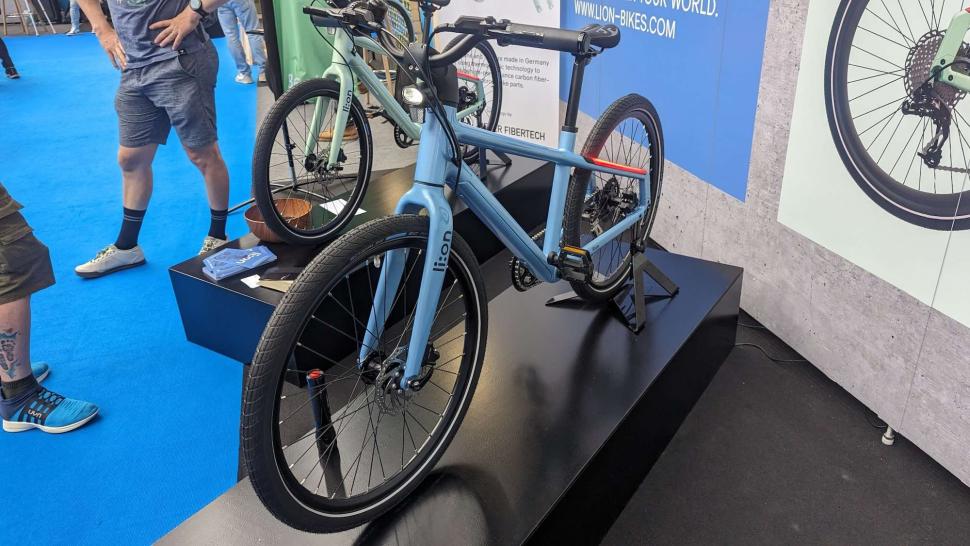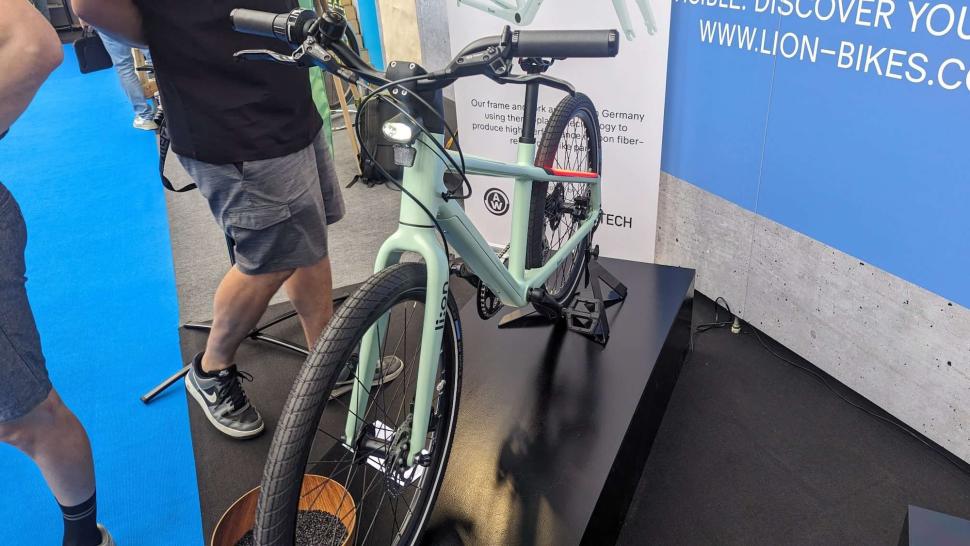- News
- Reviews
- Bikes
- Accessories
- Accessories - misc
- Computer mounts
- Bags
- Bar ends
- Bike bags & cases
- Bottle cages
- Bottles
- Cameras
- Car racks
- Child seats
- Computers
- Glasses
- GPS units
- Helmets
- Lights - front
- Lights - rear
- Lights - sets
- Locks
- Mirrors
- Mudguards
- Racks
- Pumps & CO2 inflators
- Puncture kits
- Reflectives
- Smart watches
- Stands and racks
- Trailers
- Clothing
- Components
- Bar tape & grips
- Bottom brackets
- Brake & gear cables
- Brake & STI levers
- Brake pads & spares
- Brakes
- Cassettes & freewheels
- Chains
- Chainsets & chainrings
- Derailleurs - front
- Derailleurs - rear
- Forks
- Gear levers & shifters
- Groupsets
- Handlebars & extensions
- Headsets
- Hubs
- Inner tubes
- Pedals
- Quick releases & skewers
- Saddles
- Seatposts
- Stems
- Wheels
- Tyres
- Health, fitness and nutrition
- Tools and workshop
- Miscellaneous
- Tubeless valves
- Buyers Guides
- Features
- Forum
- Recommends
- Podcast
TECH NEWS
 2023 Eurobike li-on children's bikes - 3
2023 Eurobike li-on children's bikes - 3Are these new li:on kids bikes from Marcel Kittel and Tony Martin the safest ever?
Former pro racers Marcel Kittel and Tony Martin have created a new lineup of children’s bikes that feature an oversized lighting system that’s integrated into the frame and paintwork that glows. The li:on models, described as “the most visible – and therefore safest – bikes for children and youngsters”, will go on sale in the next few weeks for delivery early next year.
Kittel and Martin say they have worked with co-founder Franz Blechschmidt for almost two years on the new bikes, the level of visibility on offer being their big USP.
“Kids on their bikes need to become more visible because every third traffic accident involving a child happens on a bike,” says li:on. “To prevent that, [we are] the first manufacturer to develop 360° visibility. The oversized lighting system with daytime running light, which is completely integrated into the frame, enhances the perception of the bike.
“Thanks to battery mode, a uniform and very bright light intensity is guaranteed.”
Best kids' bikes 2023 — everything from balance bikes to junior superbikes
Beyond that, li:on says that it is using special paint to improve visibility further.
“A paint technology used for the first time in the bicycle industry makes the frame of all li:on bikes glow,” it says. “The stylish colours are mixed with tiny transparent spheres as retroreflective pigments with an impressive effect: the paint can reflect three times more light, increasing brightness and visibility both for the human eye and the LiDAR object recognition of modern car assistance systems.”
The frame and fork are made from what li:on describes as “a high-performance polymer with recycled carbon fibres”.
“Thanks to these durable and 100% recyclable materials from the automotive sector, the main components can be produced in a state-of-the-art injection moulding process,” says li:on. “Advantages for kids: a clean look with no welds at all, a stylish design to match their favourite sneaker, a feel-good feeling with their first pedal stroke and, above all, only a mini footprint for a better tomorrow because the frame and fork of all li:on bikes are made in Germany by specialist Weber Fibertech. The CO2 emissions for each bike produced are 67% lower compared to conventional bike production.”
The Discover series of bikes from li:on feature “a specially developed stem that grows with the kids”, wide tyres for grip, and disc brakes. Aimed at children aged from seven years old, they will be available with 24in and 27.5in (650B) wheels.
“Kids and their parents can opt for the Pure model with particularly visible li:on paint, the traffic-safe Light model with lights, or the full-featured Urban with mudguards and luggage rack,” says li:on.
The prototypes have just been presented at Eurobike with frame and fork production beginning in Germany this year. Final assembly will take place in Belgium, the idea being “to keep transport distances as short as possible and the footprint as small as possible”.
Three models will be available with sales starting in Germany and the first bikes delivered in time for Easter 2024. Prices will start at €829, which converts to about £714.
Mat has been in cycling media since 1996, on titles including BikeRadar, Total Bike, Total Mountain Bike, What Mountain Bike and Mountain Biking UK, and he has been editor of 220 Triathlon and Cycling Plus. Mat has been road.cc technical editor for over a decade, testing bikes, fettling the latest kit, and trying out the most up-to-the-minute clothing. He has won his category in Ironman UK 70.3 and finished on the podium in both marathons he has run. Mat is a Cambridge graduate who did a post-grad in magazine journalism, and he is a winner of the Cycling Media Award for Specialist Online Writer. Now over 50, he's riding road and gravel bikes most days for fun and fitness rather than training for competitions.
Latest Comments
- eburtthebike 6 min 41 sec ago
I'm sure those driver who are so concerned about trees will enjoy this pic
- Secret_squirrel 26 min 14 sec ago
if only there was a metal that could be bent back in your LBS with minimal risk of it snapping or fatiguing....
- Secret_squirrel 27 min 54 sec ago
Nerd that I am - I couldnt resist popping over to the BoE Inflation Calculator....
- Yorkie1 35 min 8 sec ago
I noticed from previous bike reviews that you (Stuart) must be the same height as me roughly 1.79m tall, is there any reason you didn't ride a 54cm...
- dubwise 50 min 48 sec ago
Didn't know who it was until looking on social media on Sunday morning....
- Jimthebikeguy.com 3 hours 14 min ago
Try and get rid of the negative associations around carbon and pressfit. Carbon frames are no more troublesome than metal, and pressfit is no more...
- r32hoo 7 hours 33 min ago
The first generation CHPT3 items made in concert with Castelli were fantastic quality, and when purchased on sale were a reasonable investment. I...
- David9694 10 hours 42 min ago
Theres not one scrap of self-help among drivers is there, it's always someone else's issue.
- Simon E 11 hours 30 min ago
Oh dear. A single bike in a single size in one shop is not indicative of the entire UK market for bicycles. And the slump isn't just bikes, it's...
- hawkinspeter 14 hours 23 min ago
Ridiculed or is it just jealousy?




Add new comment
5 comments
My first thought looking at those red LEDs is that they have certainly increased visibility from above, so no accidental helicopter landings, but what about letting us see it from behind, you know the sort of view your average driver has
a curved reflective 3M self-adhesive tape can do wonders at a fraction of cost and complexity.
I wonder how much they weigh? Would hate to think the lesson of isla bikes has been lost in the rush for a plastic frame.
I'm not sure of the reason for the plastic frame - "100% recyclable materials" also describes a steel frame.
I'd be a little wary of the integrated lighting. When it breaks, it may not be replaceable, unlike normal LED lights
Presumably it's the claimed 67% reduction in emissions.
It's certainly a stylish looking bike, and it will be interesting to see how the frame stands up to the usual mistreatment that can be expected from children even with the addition of carbon fibres to the mix.